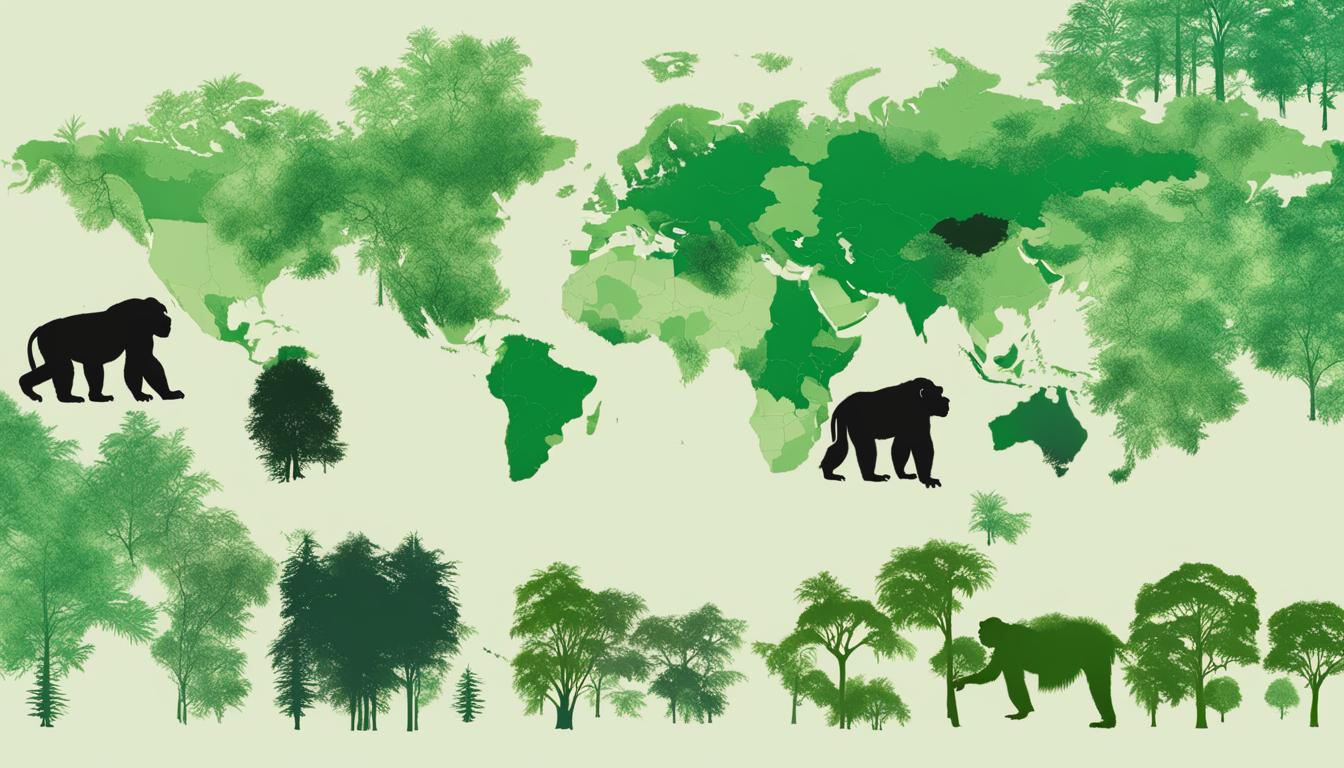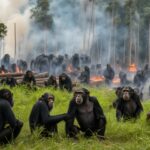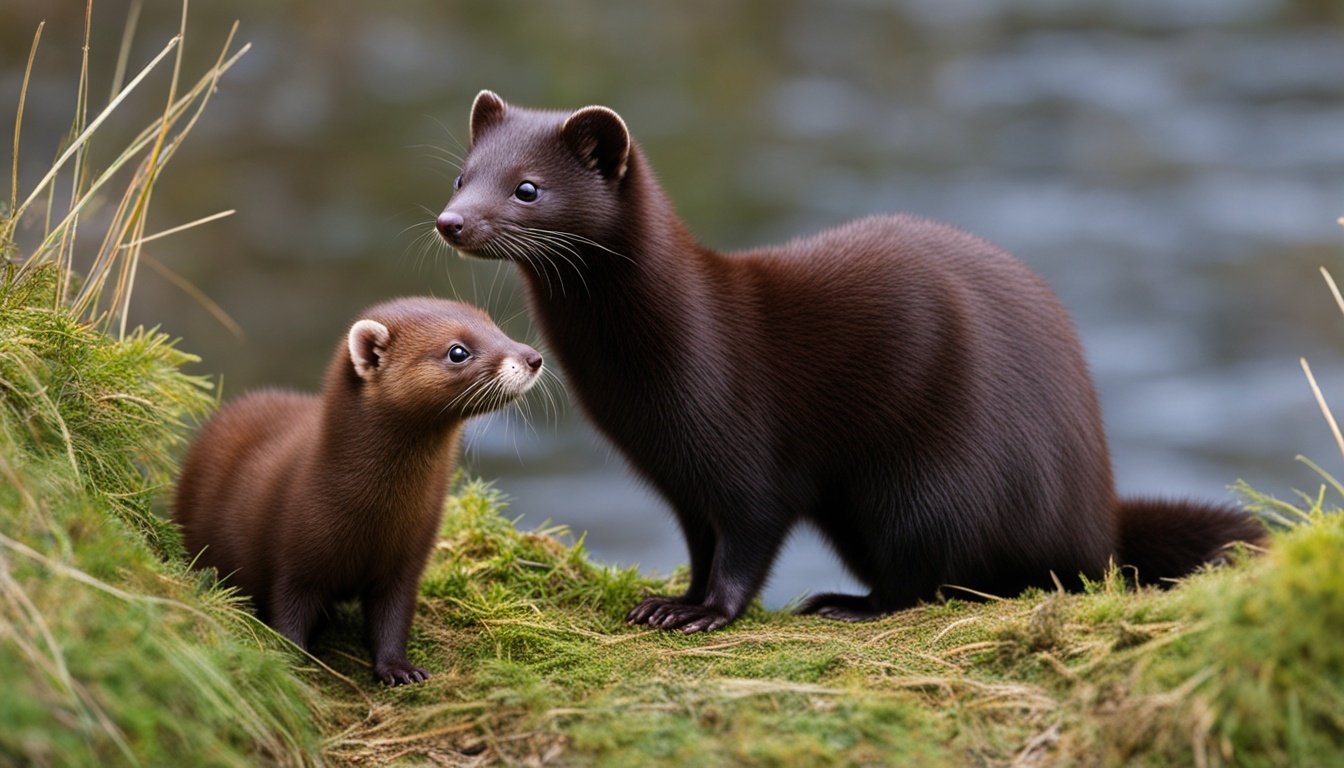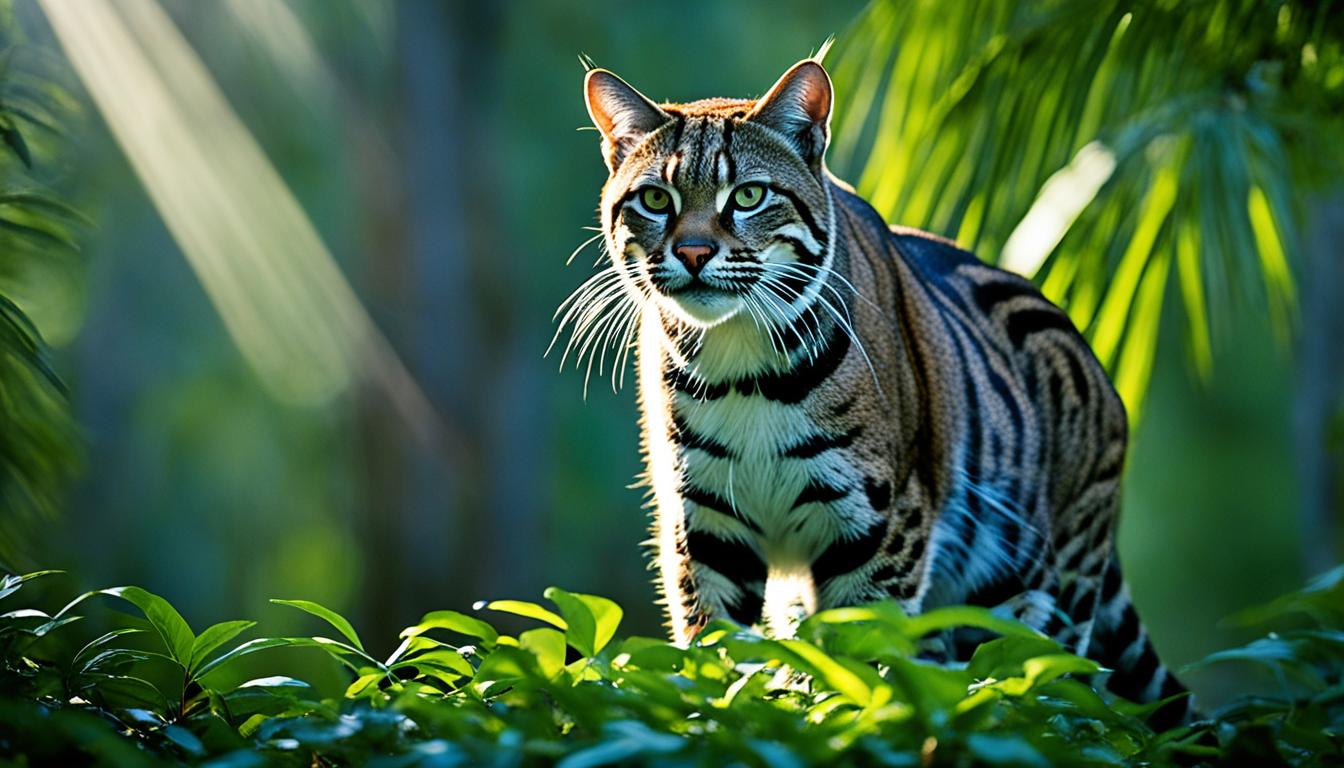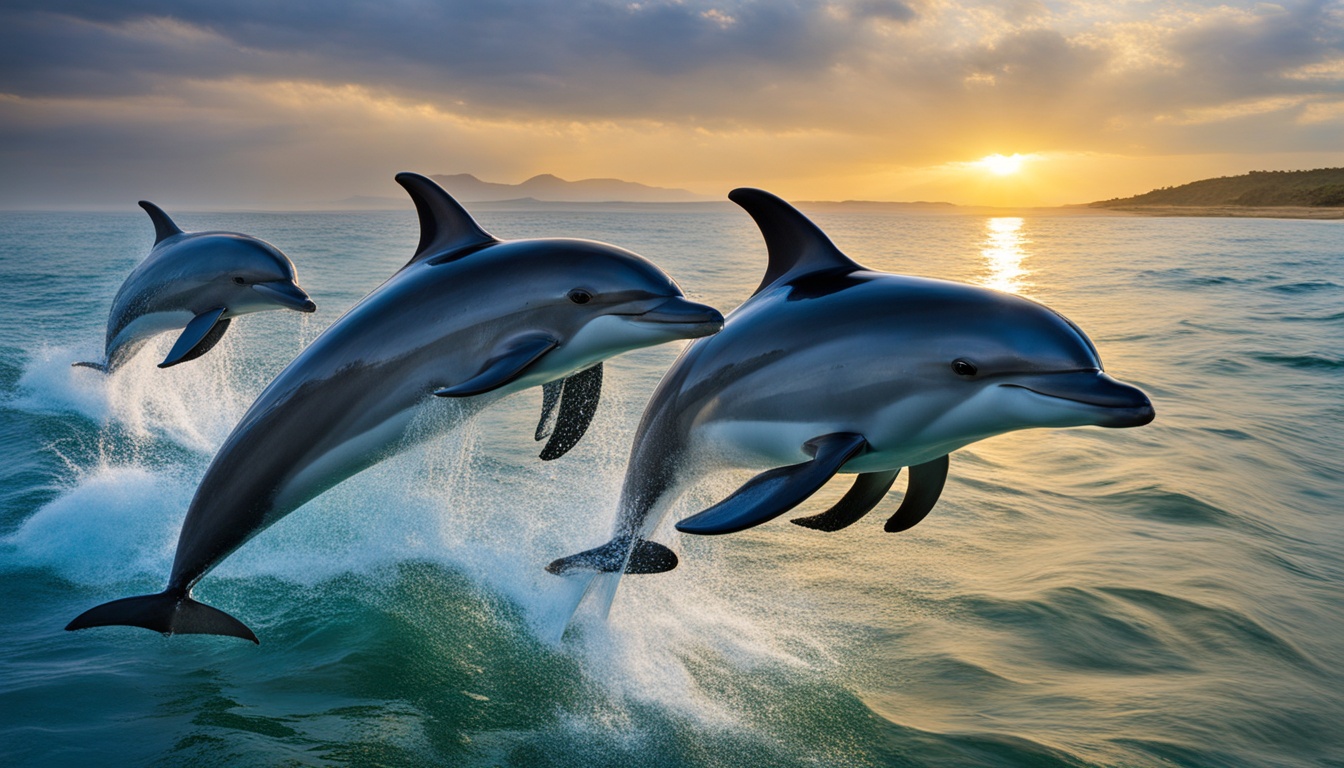Chimpanzees, our closest living relatives, are currently facing a critical conservation status. All four subspecies of chimpanzees are classified as endangered due to various threats they encounter in their natural habitats. It is crucial to understand the current status of chimpanzee populations, conservation efforts being made, and the alarming decline in their numbers.
The conservation status of wild chimpanzees is a matter of grave concern. Chimpanzees face multiple challenges, primarily driven by human activities. Habitat loss, resulting from deforestation, industrial logging, and agricultural expansion, poses a significant risk to their survival. This loss of natural habitat not only disrupts their way of life but also limits their access to vital resources.
Chimpanzees also fall prey to illegal hunting, particularly for bushmeat, which has worsened due to increased demand. The slow reproductive rate of chimpanzees further exacerbates the conservation challenge. It takes around 14-15 years for a breeding individual to be replaced if they are killed, making population recovery a lengthy and challenging process.
To address these threats and conserve chimpanzee populations, extensive conservation efforts are being undertaken. Non-governmental organizations (NGOs), national governments, and local communities are working together to develop action plans, improve wildlife protection, conduct environmental education programs, and tackle habitat loss.
Protecting chimpanzees and their habitats is not only important for their long-term survival but also for the health and balance of ecosystems. Chimpanzees play a crucial role in seed dispersal and forest restoration. Their consumption of large seeds promotes the growth of plants in cleared forest areas, contributing to the restoration of valuable forest ecosystems.
In the coming sections of this article, we will explore the habitat and social structure of chimpanzees, their significance in sustaining ecosystems, the threats they face, and ongoing conservation efforts aimed at safeguarding these intelligent and remarkable creatures.
Habitat and Social Structure of Chimpanzees
Chimpanzees inhabit a diverse range of habitats, including savanna woodlands, grassland-forest mosaics, and tropical moist forests. These environments provide the chimpanzees with the necessary resources, such as food, water, and shelter, for their survival.
Chimpanzees live in communities or groups consisting of both males and females. These communities have a loose and flexible social structure, allowing individuals to come and go freely. Each community is led by a dominant male, known as the alpha male, who is responsible for making decisions and ensuring the safety and well-being of the group.
Chimpanzee communities can vary in size, ranging from around 15 to 80 individuals. The size of the community depends on factors like the availability of food and suitable habitat. These communities form a complex social network with intricate relationships and hierarchies among the members.
Chimpanzees have a unique reproductive system. Breeding can occur throughout the year, and females typically give birth to a single young after a gestation period of approximately 8 months. The interval between births is usually 5-6 years, as chimpanzees have a slow reproductive rate.
Chimpanzees are classified as omnivores, meaning they consume both plant-based and animal-based food. Their diet includes a variety of fruits, leaves, insects, and occasionally eggs and meat. The availability of food sources influences their feeding patterns, and they have been observed using tools to extract termites from mounds or crack nuts.
| Chimpanzee Habitat | Social Structure | Reproduction | Diet |
|---|---|---|---|
| Savanna woodlands | Loose and flexible groups | Year-round breeding | Fruits, leaves, insects, occasional eggs and meat |
| Grassland-forest mosaics | Alpha male-led communities | Single birth every 5-6 years | Tools used for food extraction |
| Tropical moist forests | Ranging from 15 to 80 individuals | Slow reproductive rate | Varied diet depending on food availability |
Importance of Chimpanzees for Ecosystems
Chimpanzees, along with other great apes, play a vital role in maintaining the balance and diversity of ecosystems. One of their key contributions is seed dispersal, which has a profound impact on forest restoration and the overall health of Central Africa’s forests.
Chimpanzees consume large seeds that are too big for other animals to eat, effectively acting as seed dispersers. As they travel throughout their habitat, they deposit seeds through their dung in various locations, helping to spread plant species and promote forest regeneration. Their unique ability to consume and transport large seeds that smaller animals cannot handle makes them essential for maintaining the biodiversity of the forest.
The process of chimpanzee seed dispersal has far-reaching effects on the ecosystem. It allows plants to colonize new areas, contributing to habitat expansion and connectivity. The dispersed seeds have a higher chance of germination and survival, as they often benefit from the nutrient-rich environment provided by the chimpanzees’ dung. This, in turn, leads to the establishment of diverse plant communities and contributes to the overall health and resilience of the forest ecosystem.
Furthermore, the role of chimpanzees in seed dispersal has significant implications for forest restoration efforts. In areas where forests have been cleared or degraded, chimpanzees can help facilitate the recovery process by dispersing seeds of native tree species. Their presence and foraging behavior contribute to the reestablishment of diverse tree populations, ultimately aiding in the restoration of forest ecosystems and their associated ecological functions.
Understanding and acknowledging the importance of chimpanzees for ecosystems is crucial for conservation efforts. Protecting chimpanzee populations and their habitats not only ensures the survival of this iconic species but also safeguards the intricate ecological interactions they play a part in. It highlights the need to prioritize conservation strategies that conserve not only individual species but also the entire ecosystems they inhabit.
Threats to Chimpanzee Populations
Chimpanzees, our closest living relatives, are facing numerous threats that are pushing their populations towards endangerment and even extinction. It is crucial to address these threats promptly to ensure the long-term survival of these magnificent creatures.
Poaching of Chimpanzees
One of the most pressing threats to chimpanzees is poaching, driven primarily by the demand for bushmeat and the illegal pet trade. Chimpanzee meat, also known as “bushmeat,” is considered a delicacy in certain regions and continues to be a significant driver of poaching activities. The capture of chimpanzees for the pet trade further exacerbates this issue.
“The poaching of chimpanzees for bushmeat and as exotic pets not only affects the population numbers but also disrupts their social structure and hampers the overall conservation efforts.”
Habitat Loss and Degradation
Chimpanzees heavily rely on intact forest habitats for their survival. However, rampant activities such as industrial logging, agricultural expansion, and deforestation for human settlements are leading to extensive habitat loss and degradation. As their natural habitats continue to shrink, chimpanzees face increased competition for resources, disruption of social structures, and isolation of populations.
Infectious Diseases
Chimpanzees are susceptible to various infectious diseases, some of which have had devastating impacts on their populations. Outbreaks of diseases like Ebola and anthrax have caused significant declines in chimpanzee numbers. These diseases can spread rapidly within chimpanzee communities and result in high mortality rates.
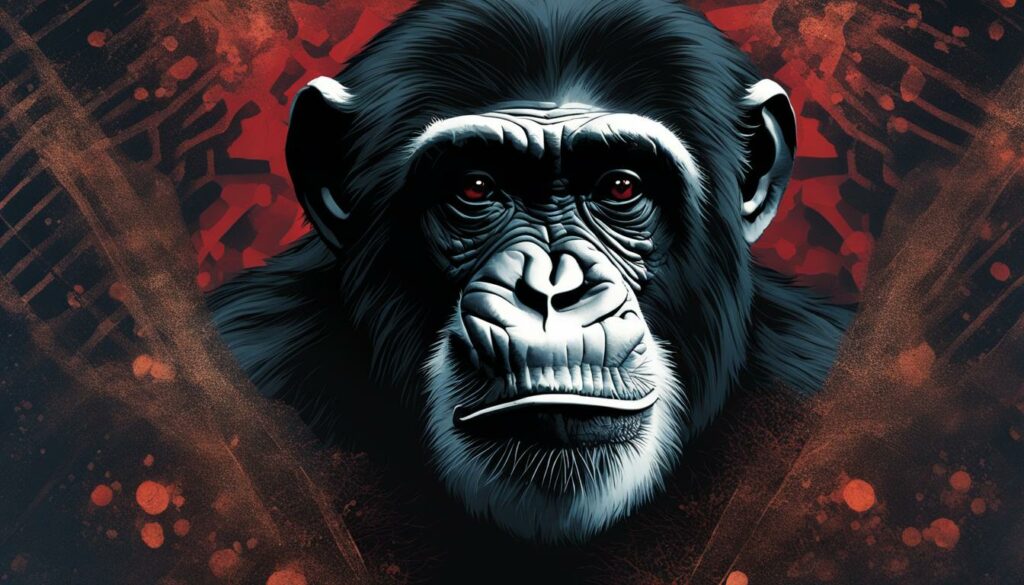
Efforts to combat these threats require collaborative approaches involving governments, local communities, and conservation organizations. Immediate actions should include strengthening anti-poaching efforts, creating and enforcing stricter legislation against illegal wildlife trade, and promoting sustainable land-use practices to mitigate habitat loss and degradation.
| Threats | Impact |
|---|---|
| Poaching of Chimpanzees |
– Decline in population numbers – Disruption of social structure – Interference with conservation efforts |
| Habitat Loss and Degradation |
– Decreased availability of resources – Disruption of social structures – Fragmentation and isolation of populations |
| Infectious Diseases |
– High mortality rates – Population declines – Disruption of social behavior and dynamics |
Characteristics and Behavior of Chimpanzees
Chimpanzees, our closest living relatives, share about 98% of their genetic material with humans. They display fascinating physical characteristics, with long, coarse black or brown hairs covering their bodies. As omnivores, chimpanzees have a diverse diet that includes fruits, leaves, insects, and occasionally eggs and meat.
What truly sets chimpanzees apart is their remarkable intelligence. They exhibit problem-solving abilities, tool use, and even cultural variations within their communities. Chimpanzees have been observed using tools such as sticks for extracting termites from mounds or stones for cracking open nuts.
Furthermore, chimpanzees have complex social behavior that resembles human societies. They live in communities led by a dominant male and consisting of both males and females. Within these communities, chimpanzees communicate through a variety of vocalizations and gestures, forming intricate social bonds and hierarchies.
In summary, chimpanzees possess unique physical characteristics, exhibit high intelligence, demonstrate tool use, and display complex social behavior. These fascinating traits make them a subject of great scientific interest and emphasize the importance of protecting these incredible creatures and their natural habitats.
Conservation Efforts for Chimpanzees
Conservation organizations play a crucial role in protecting chimpanzees and safeguarding their habitats. One such organization is Born Free, which is dedicated to the conservation of endangered species, including chimpanzees. Through their initiatives, they support the rescue and care of individual chimpanzees, ensuring that these magnificent creatures receive the necessary attention and rehabilitation they need.
A key aspect of chimpanzee conservation is promoting sustainable alternative livelihoods. By offering viable and sustainable economic opportunities to local communities, organizations aim to address the issue of bushmeat hunting, which poses a significant threat to chimpanzees. By providing individuals with alternative income sources, such as eco-tourism or sustainable agriculture, conservation organizations reduce the reliance on hunting chimpanzees for survival.
In addition, conservation organizations campaign against the illegal trade in both bushmeat and live chimpanzees. They work tirelessly to raise awareness about the devastating impact of such activities on chimpanzee populations. By advocating for stricter regulations and law enforcement, these organizations strive to combat the illegal wildlife trade and protect these remarkable animals from exploitation and harm.
To ensure the long-term survival of chimpanzees, conservation organizations also focus on protecting and preserving chimpanzee natural habitats. This involves collaborating with local communities, governments, and other stakeholders to enforce laws and policies that prevent habitat loss and degradation. Through habitat restoration initiatives, educational programs, and community engagement, these organizations strive to create a sustainable future for chimpanzees and the ecosystems they inhabit.
How Do Conservation Efforts Affect the Current Conservation Status of Chimpanzee Populations?
Key conservation efforts for chimpanzees, such as protecting their habitat, stopping poaching, and promoting sustainable tourism, have contributed to improving the current conservation status of chimpanzee populations. These efforts have helped to stabilize and even increase chimpanzee numbers in some areas, offering hope for the future of these remarkable animals.
Have Conservation Efforts Led to an Improvement in Chimpanzee Populations?
There have been several successful chimpanzee conservation cases that have led to a noticeable improvement in chimpanzee populations. By implementing strict protection measures, habitat restoration, and raising public awareness, these efforts have contributed to the overall growth of chimpanzee numbers in specific regions.

